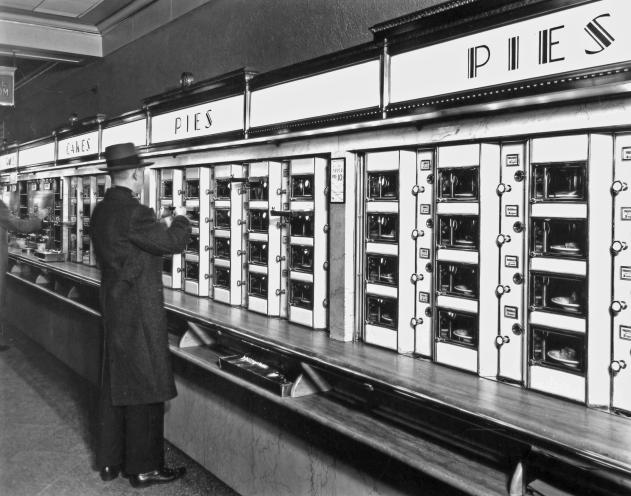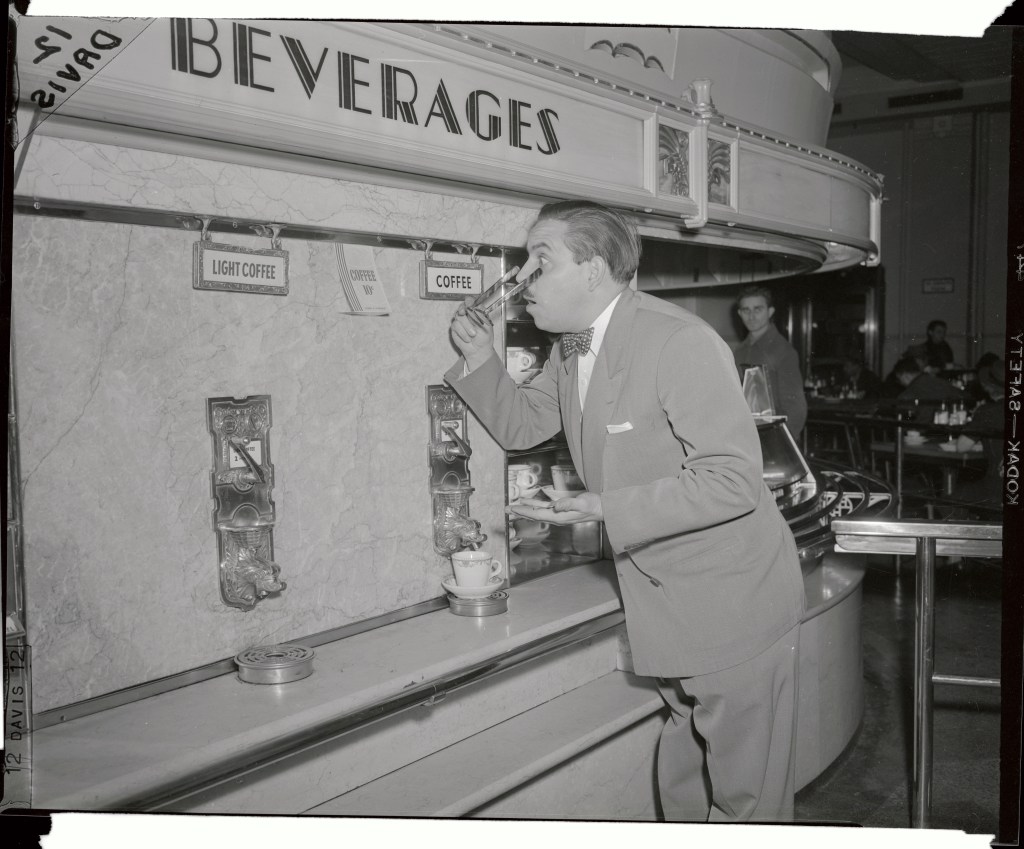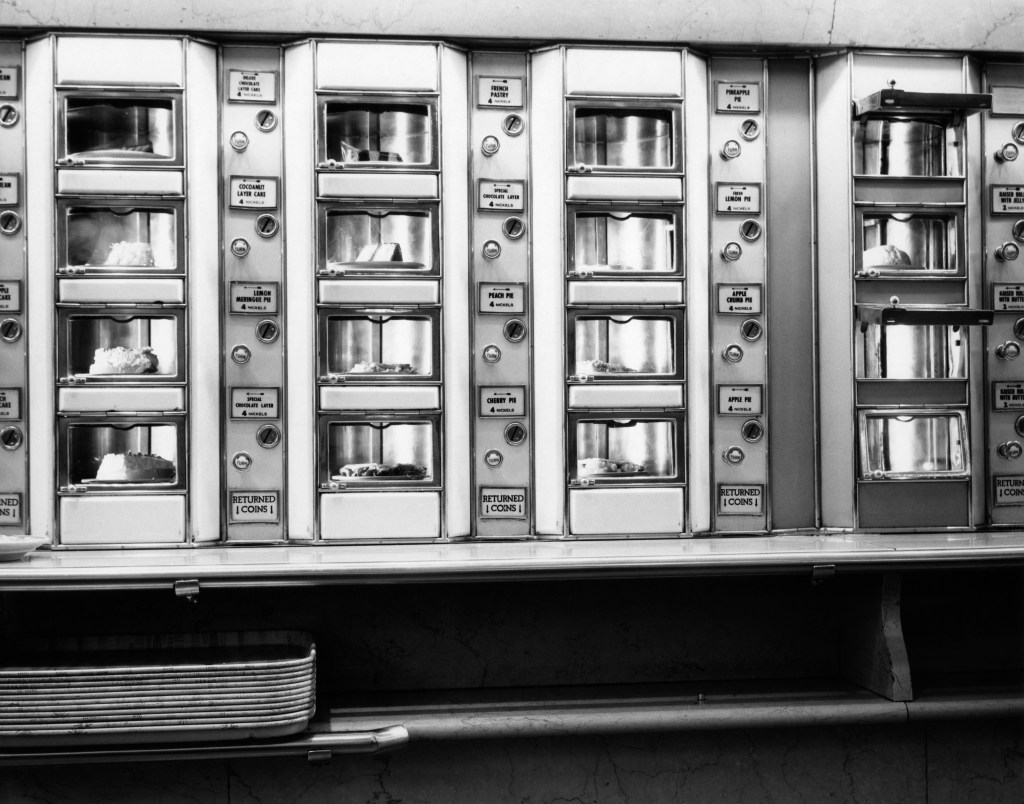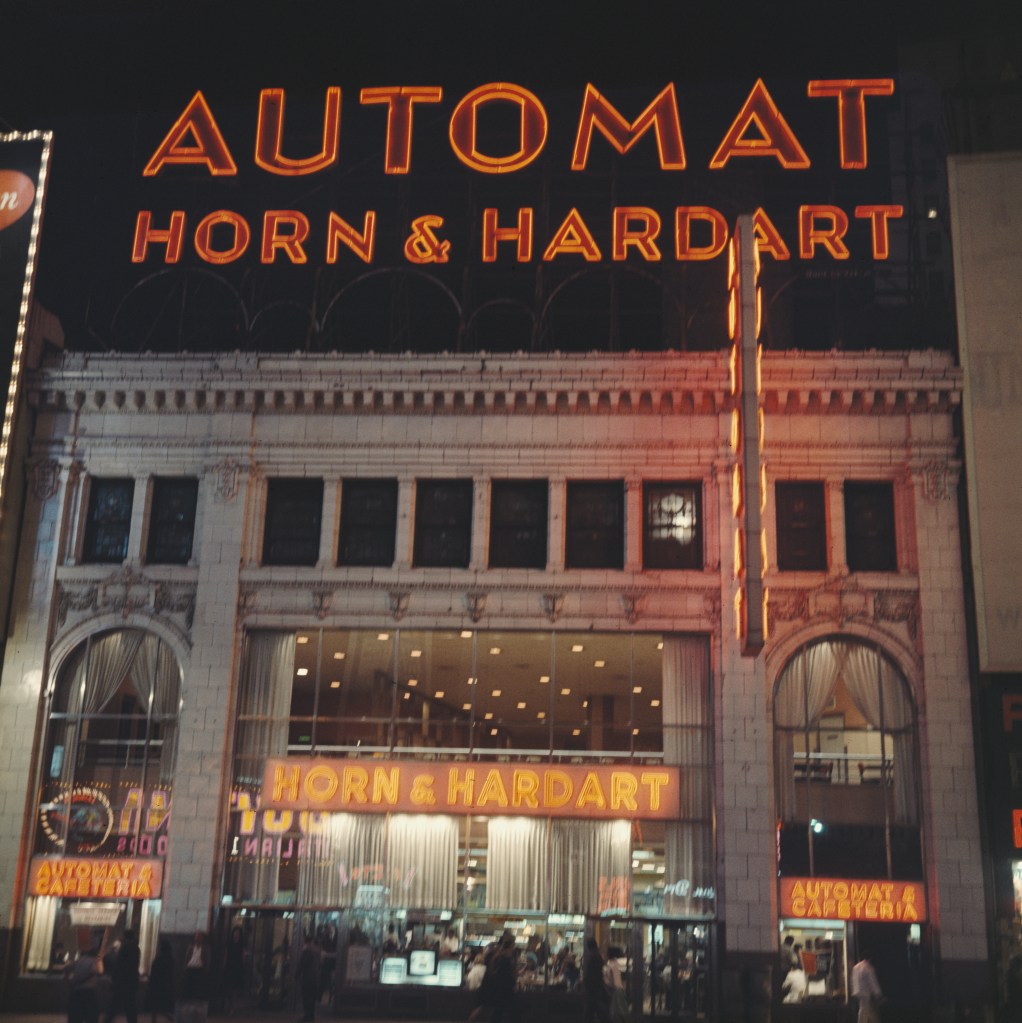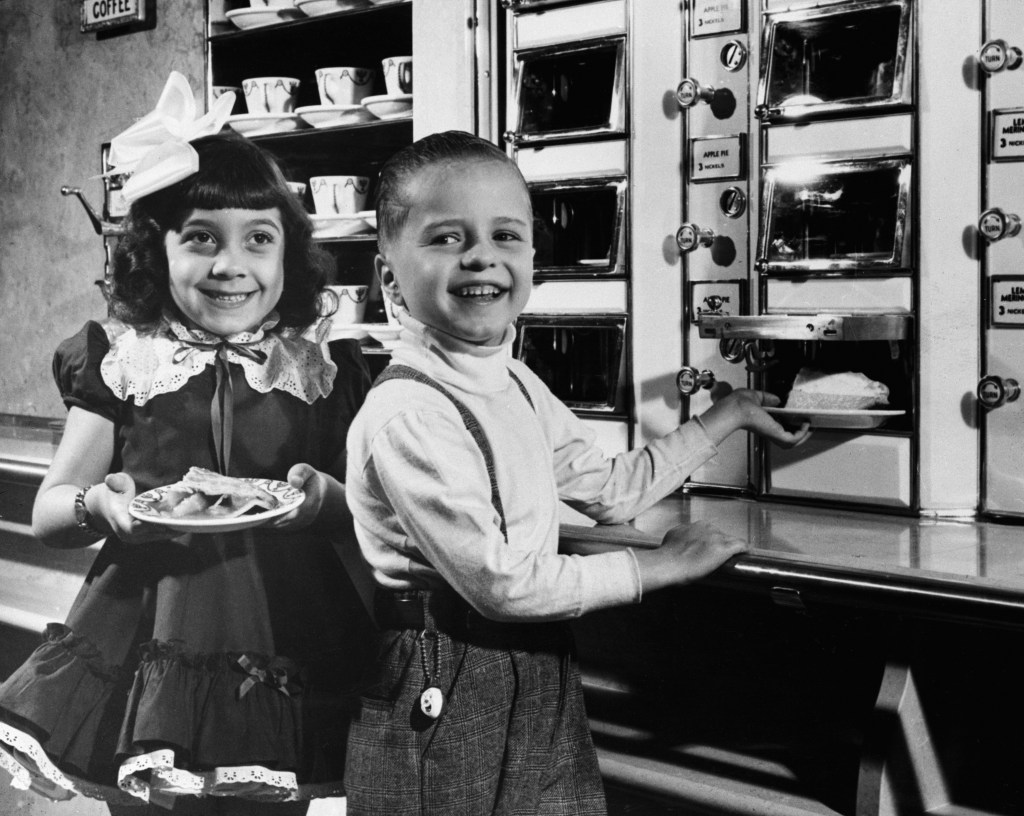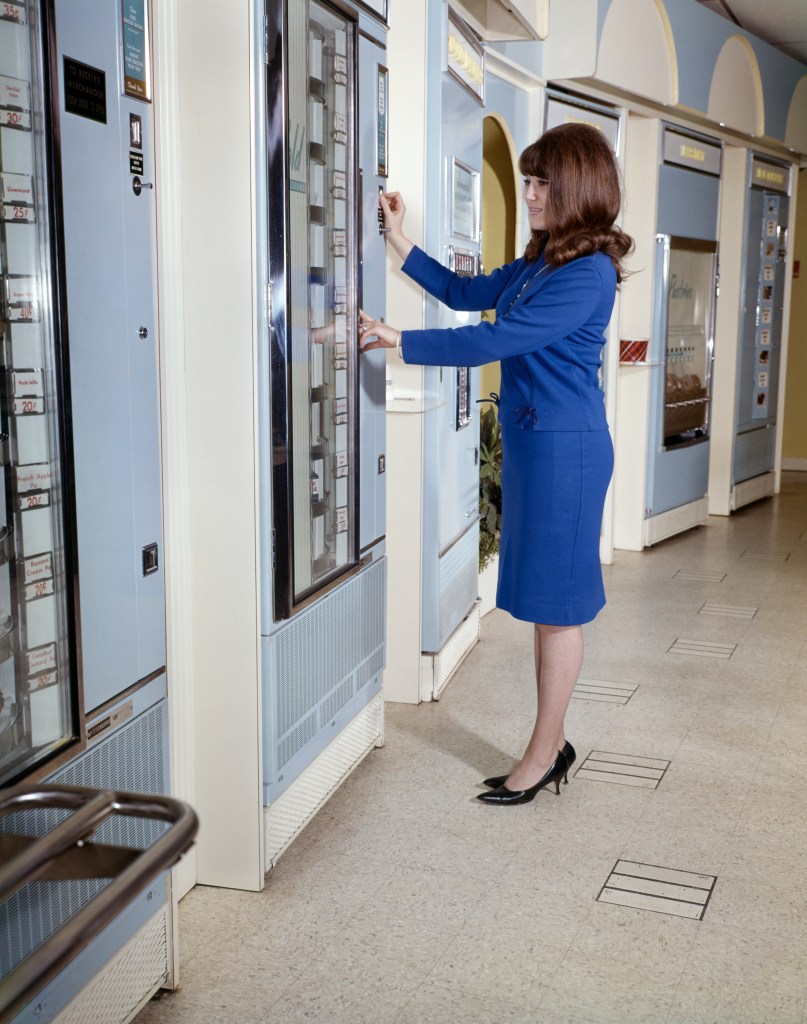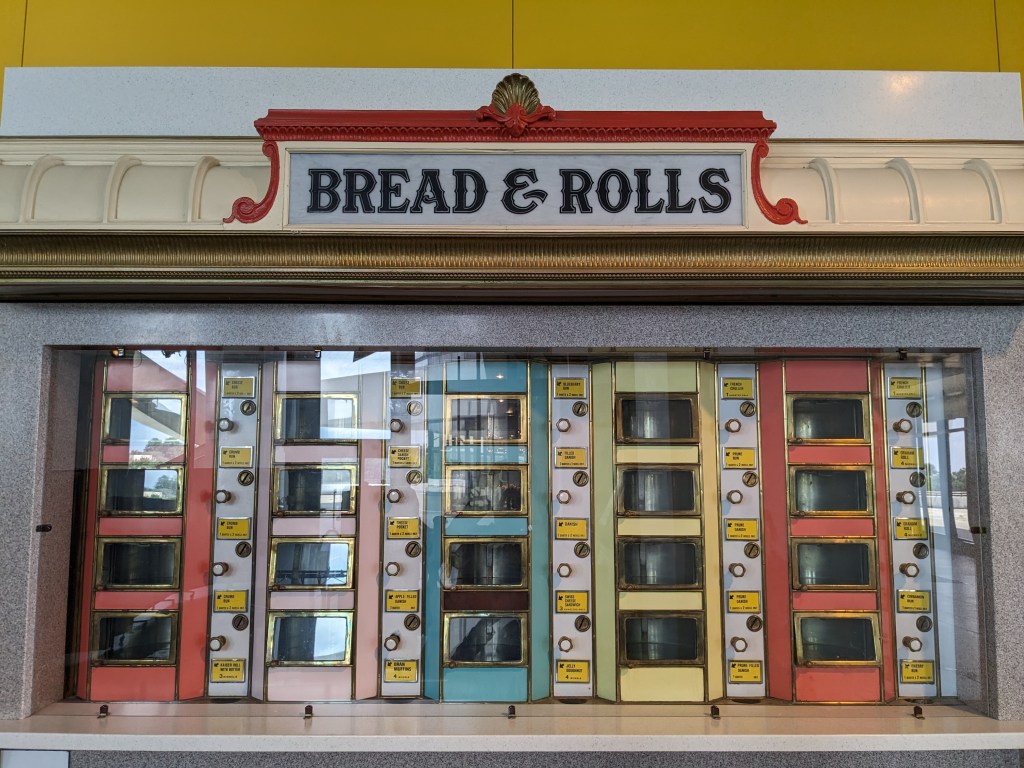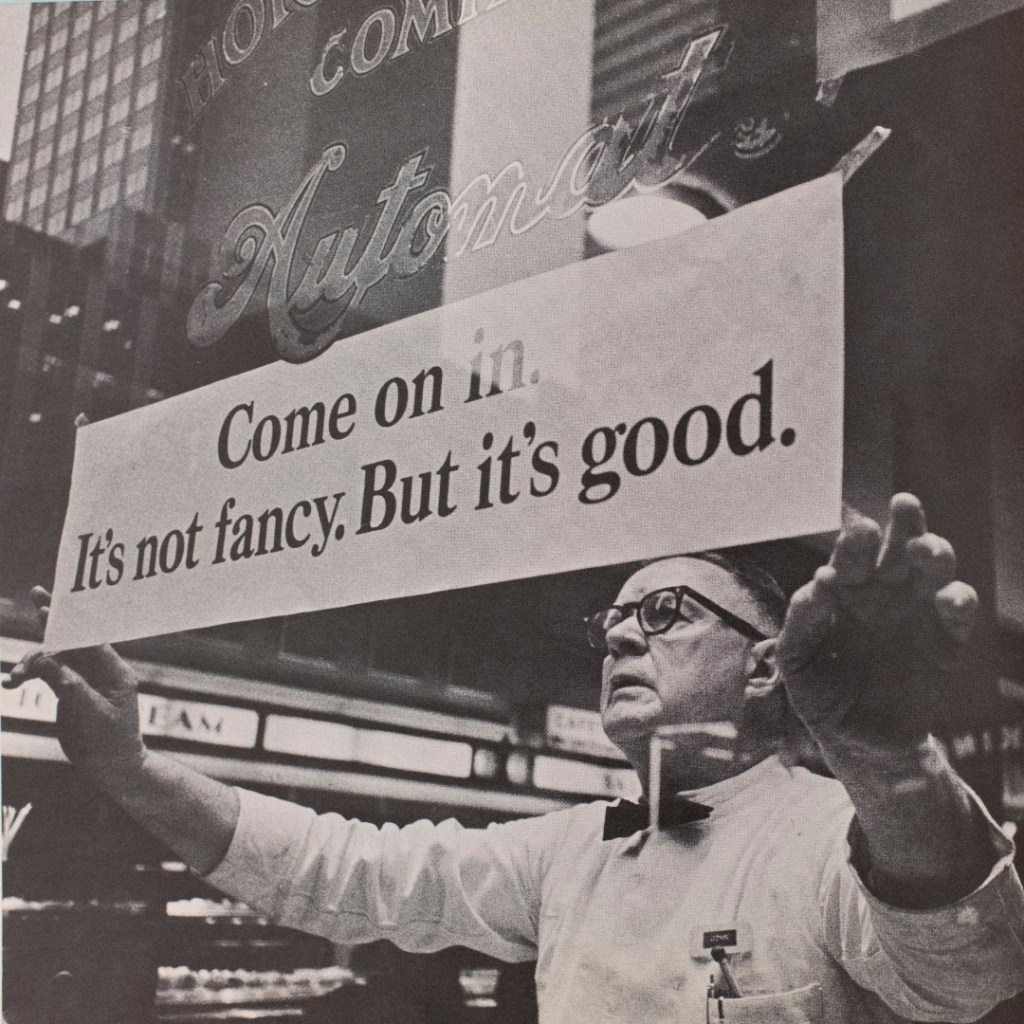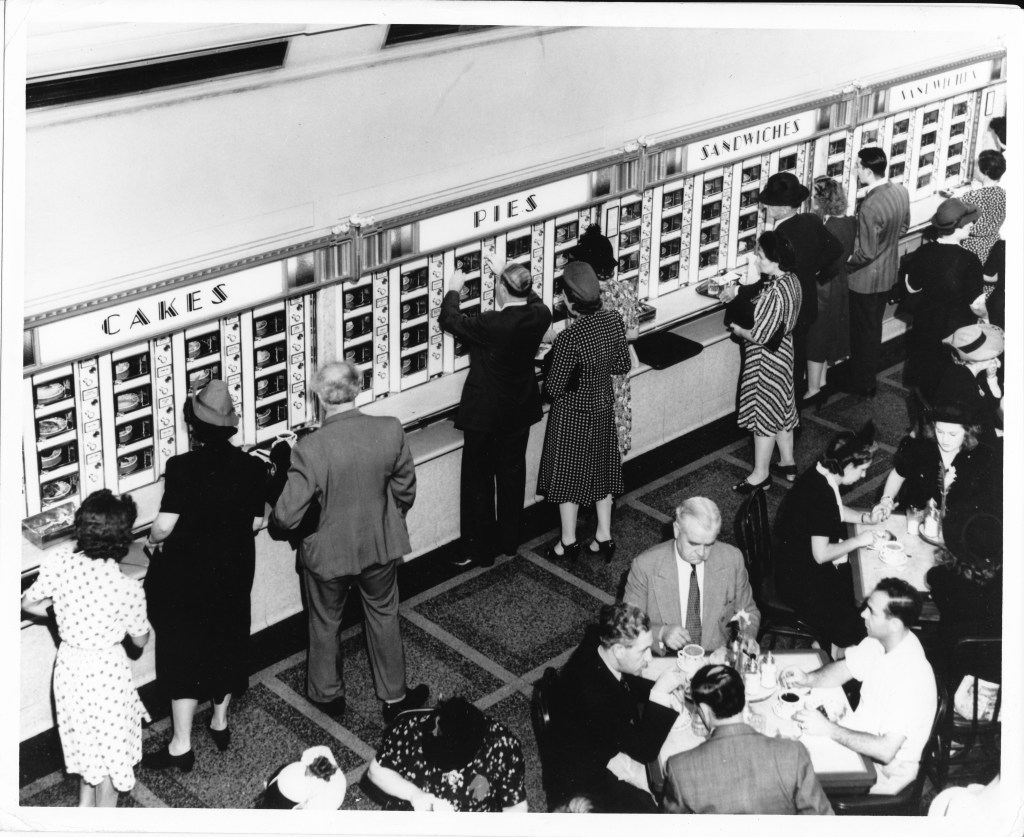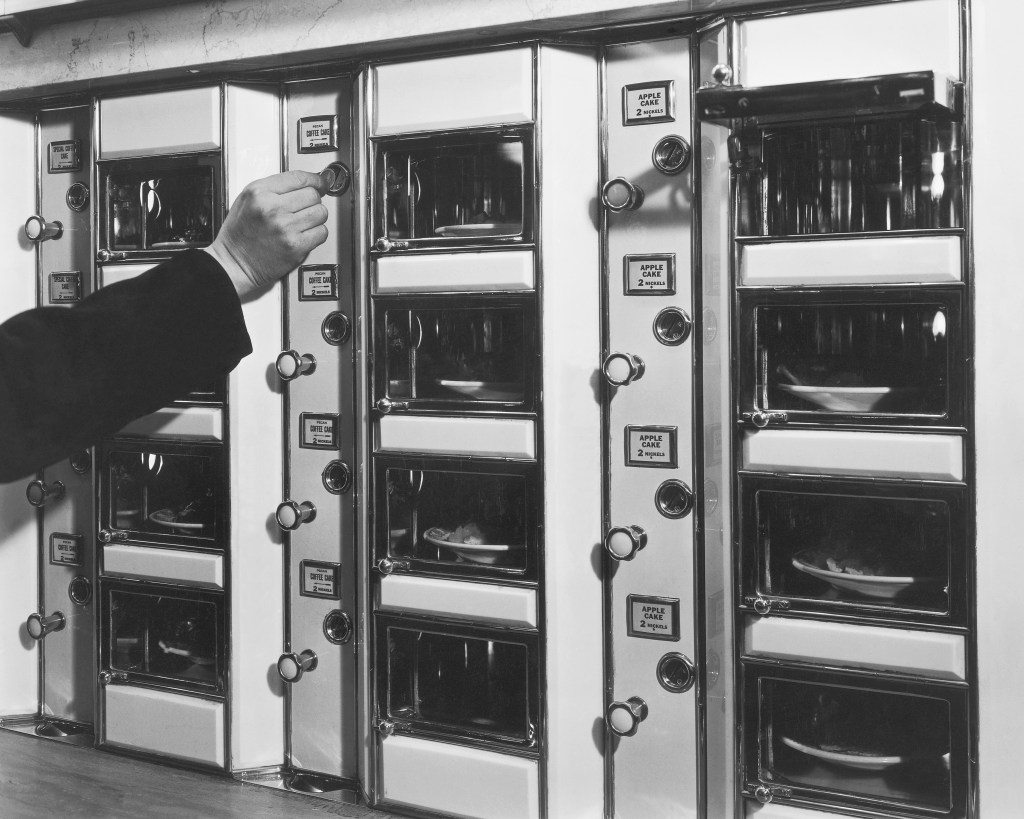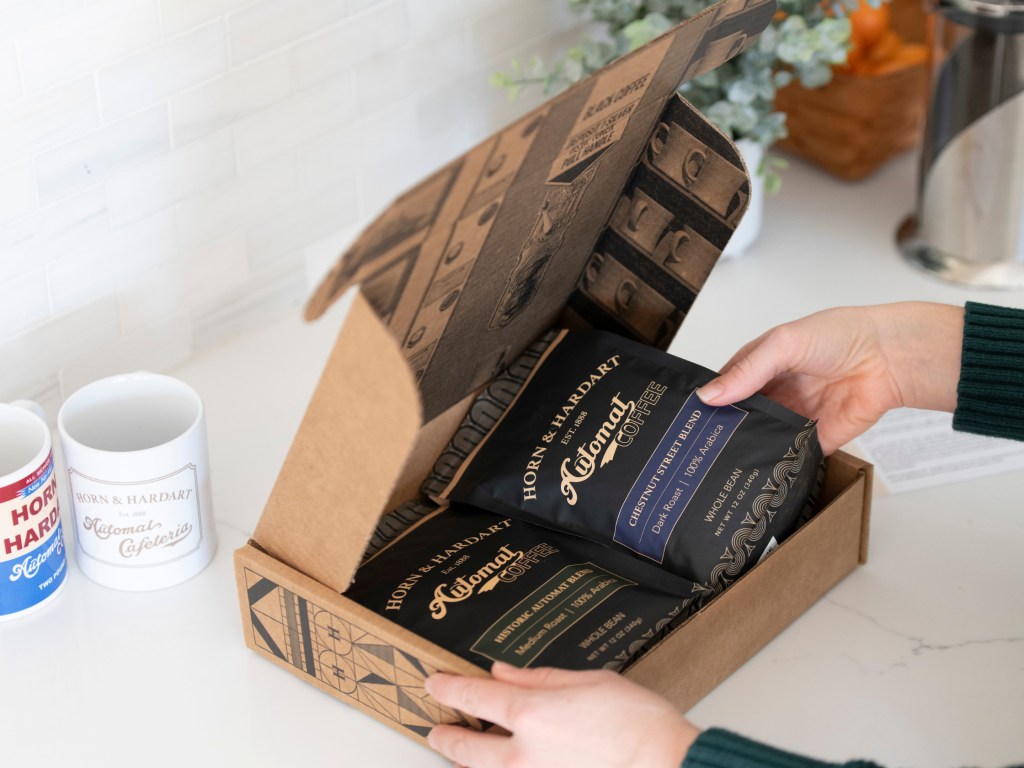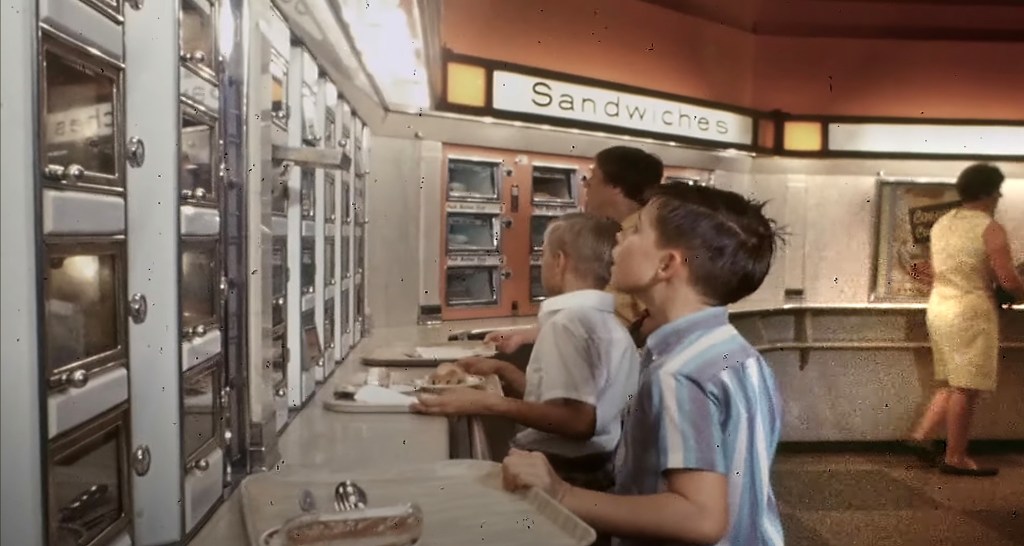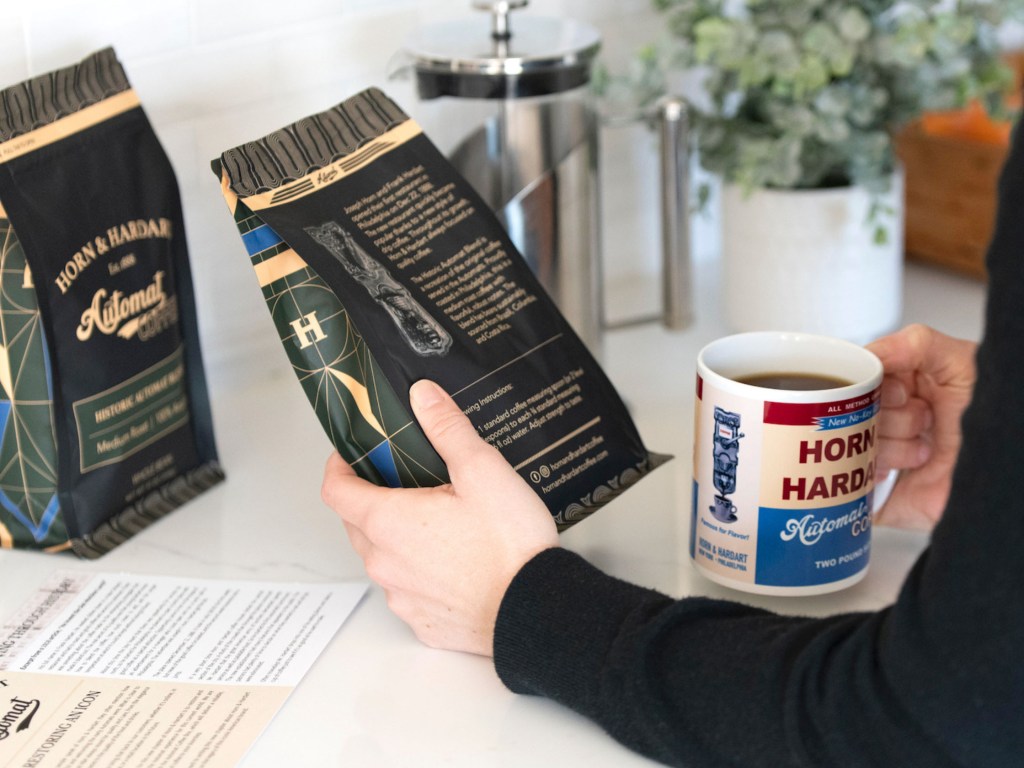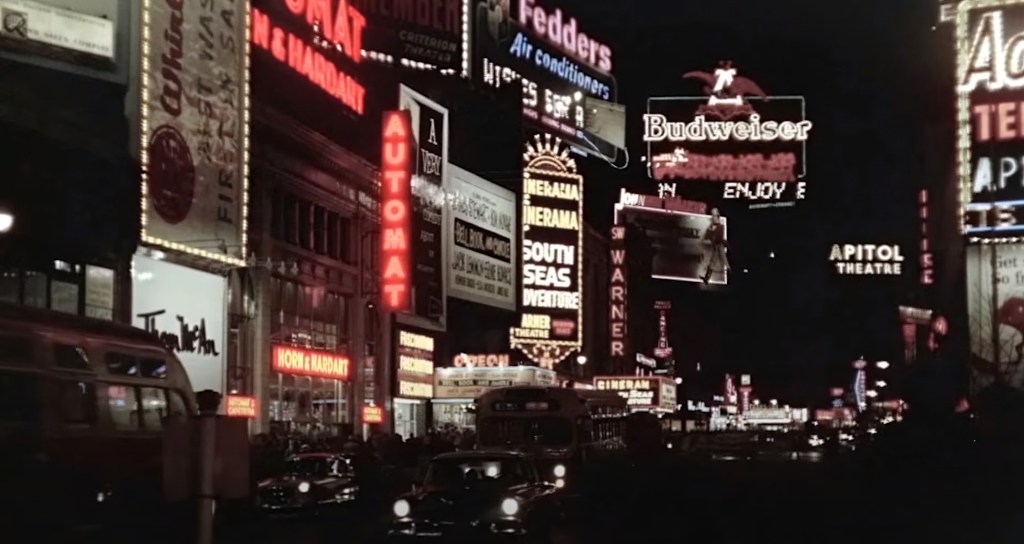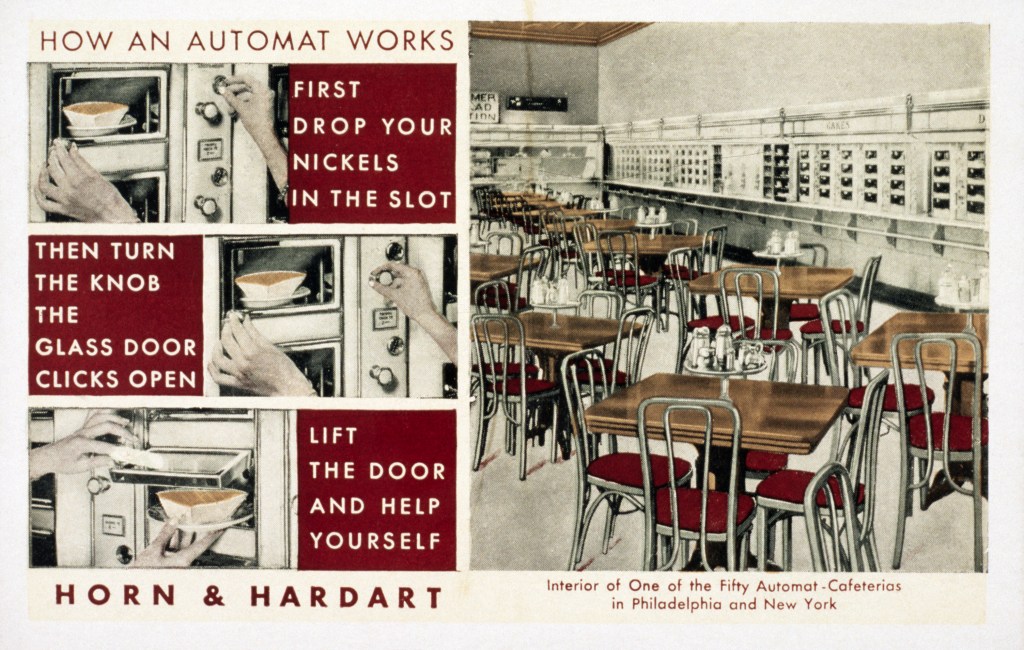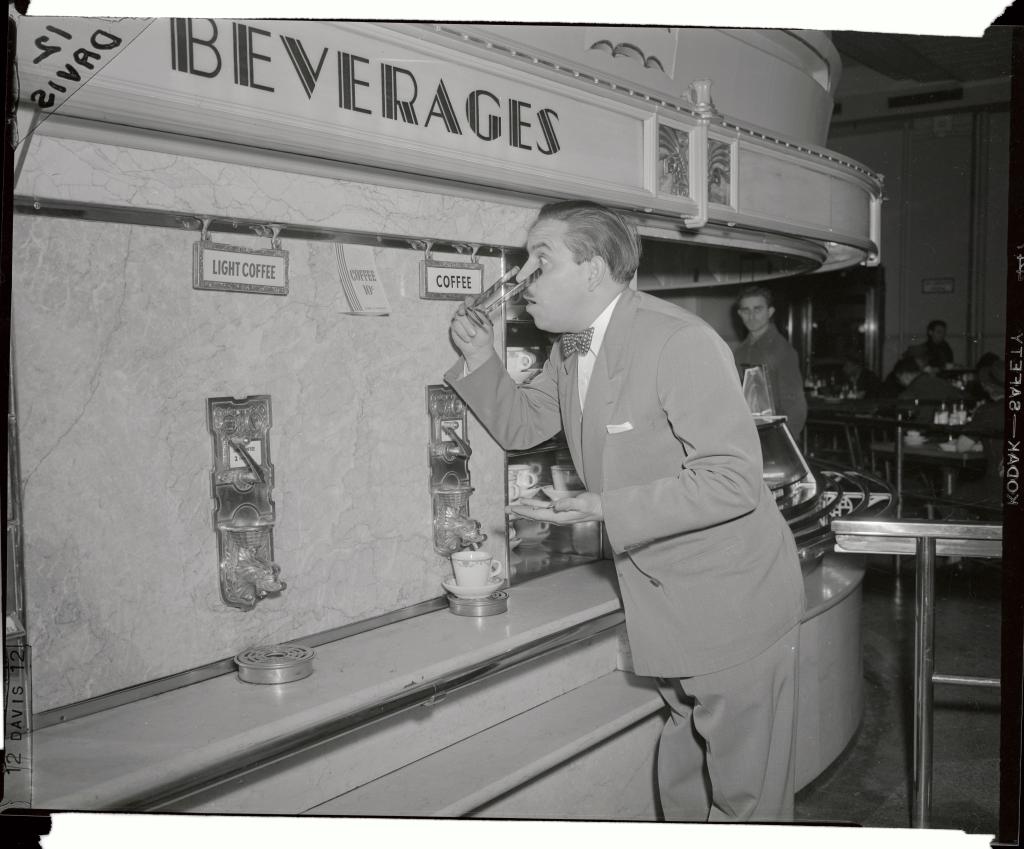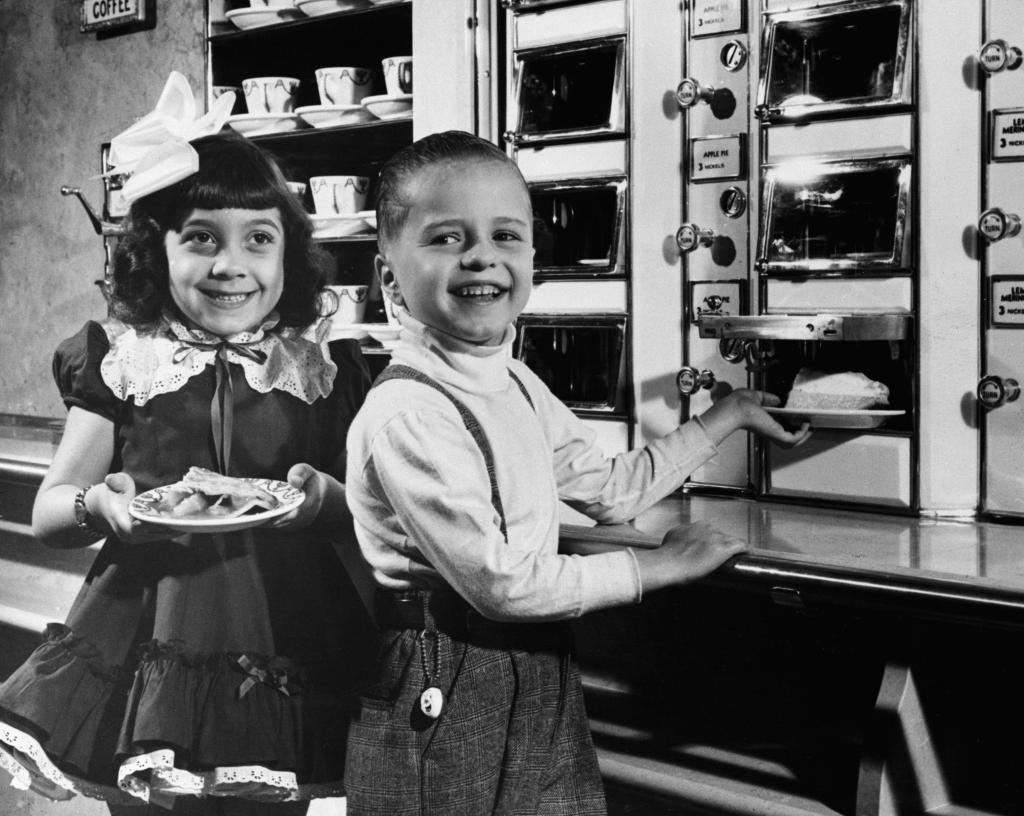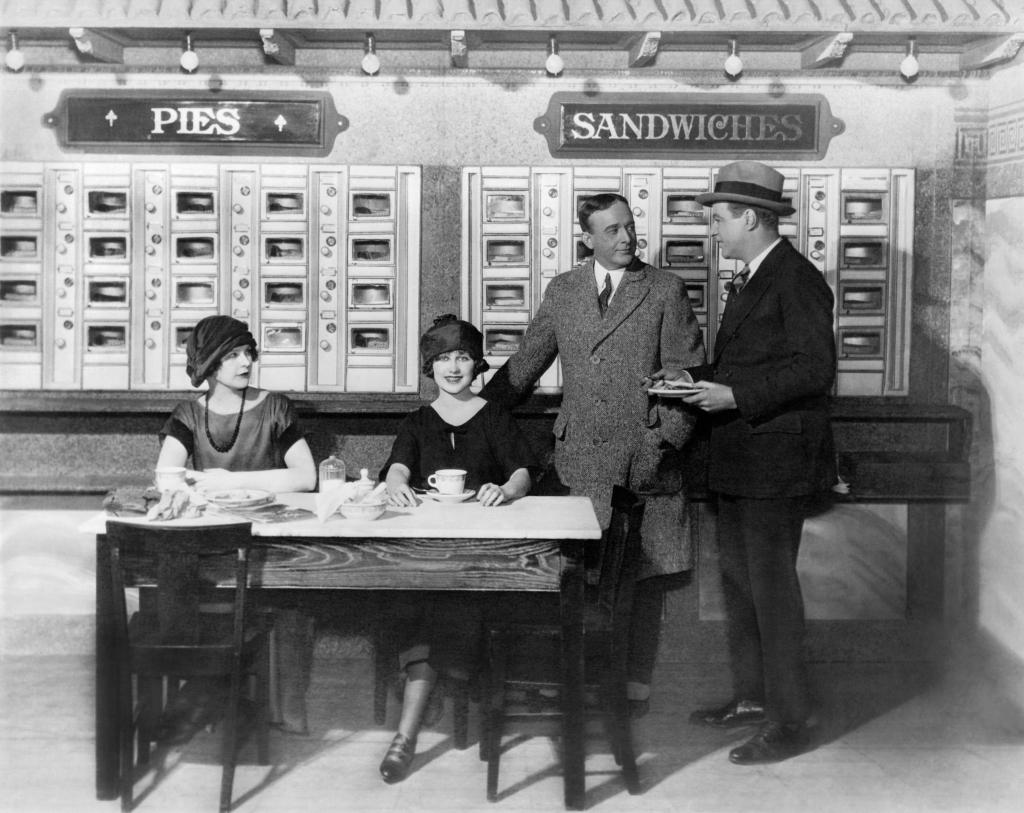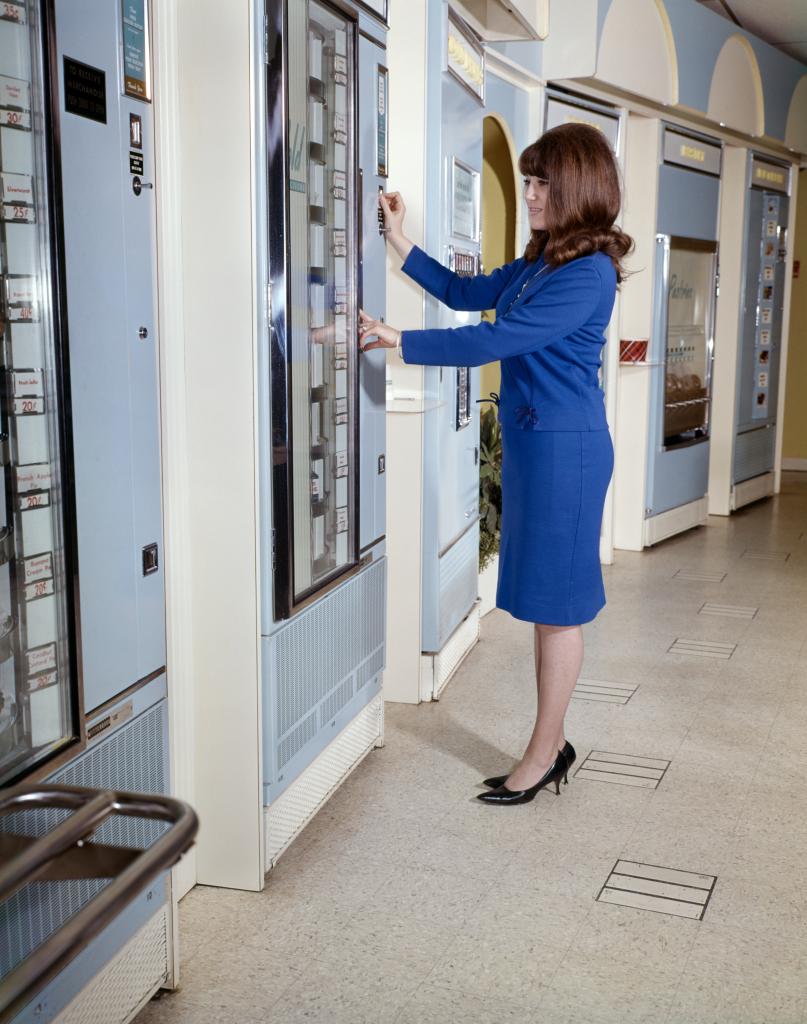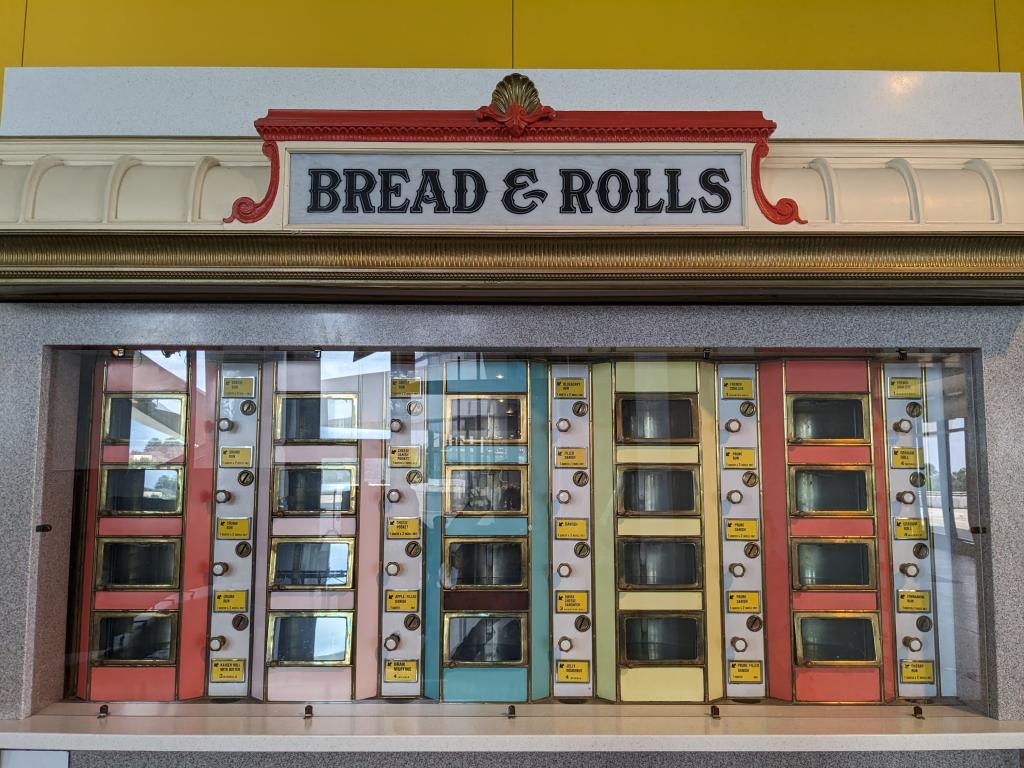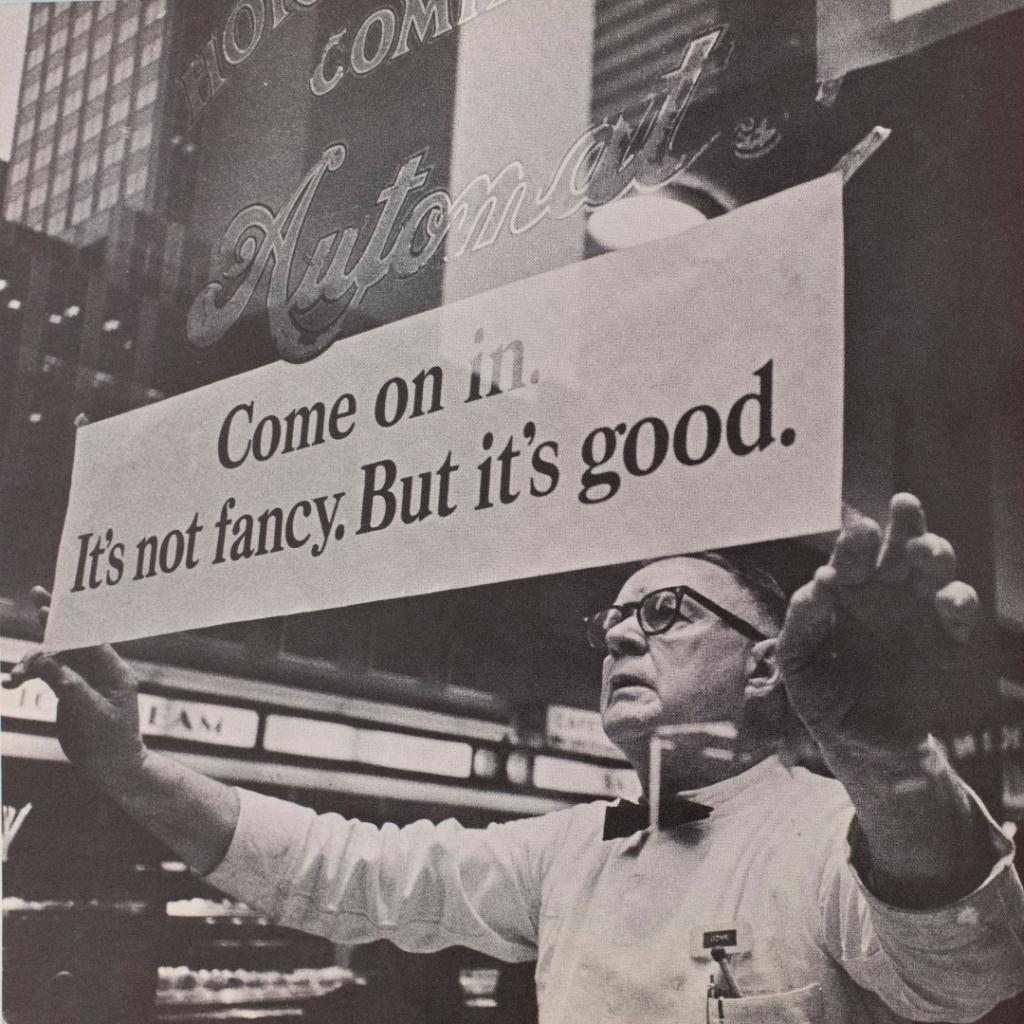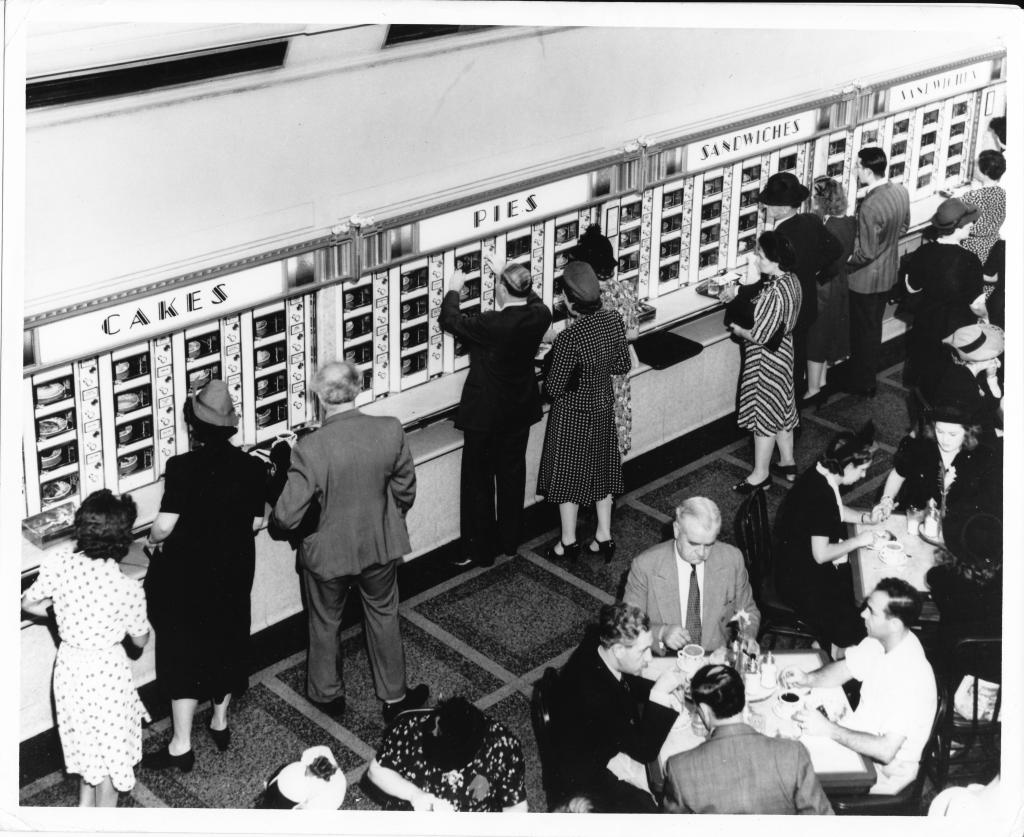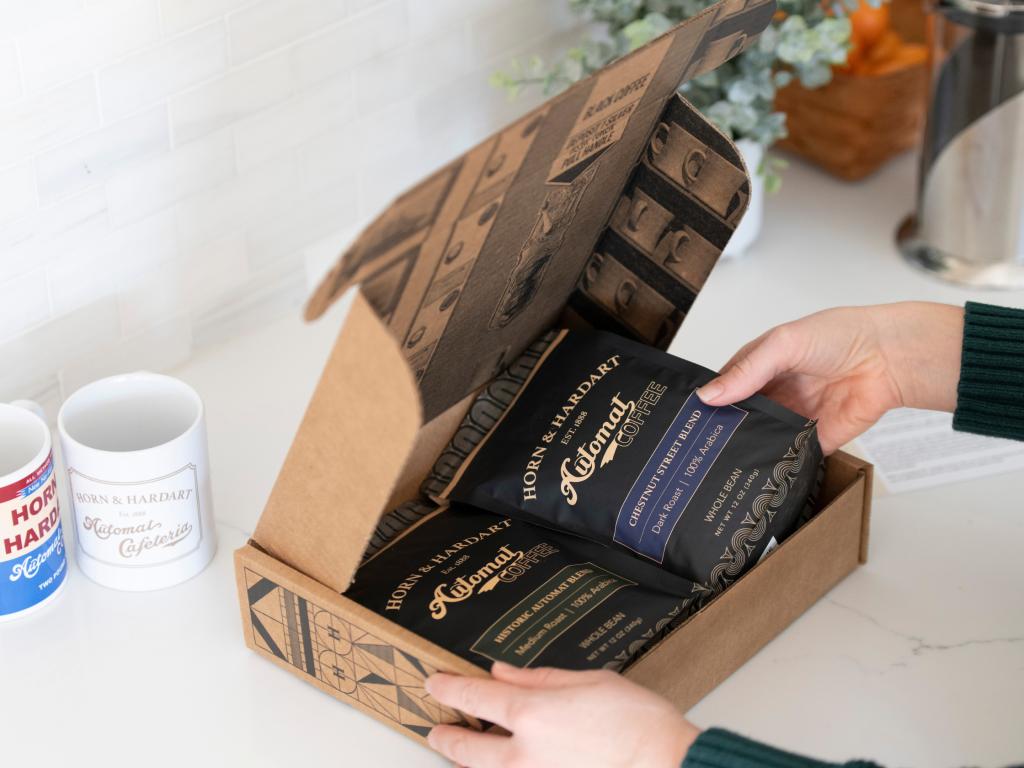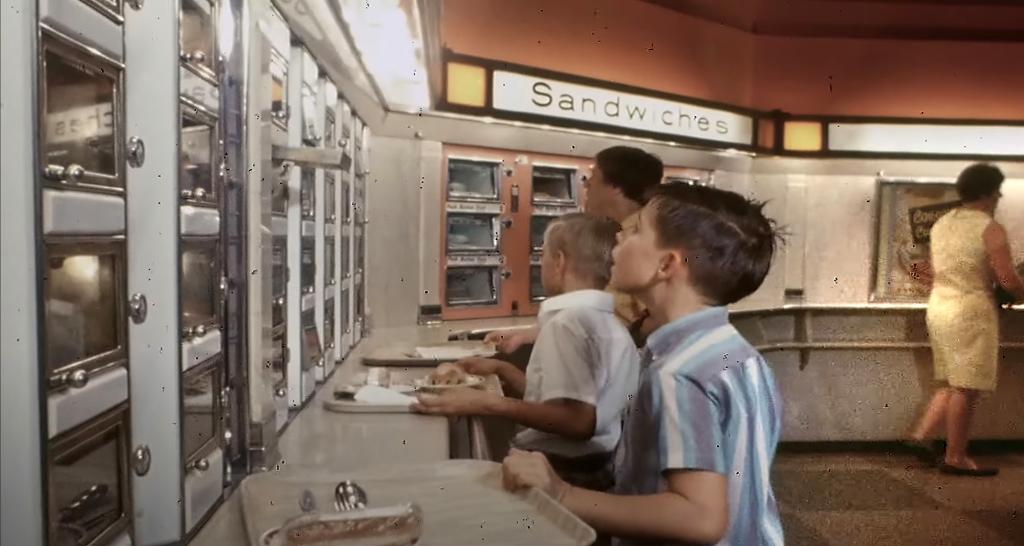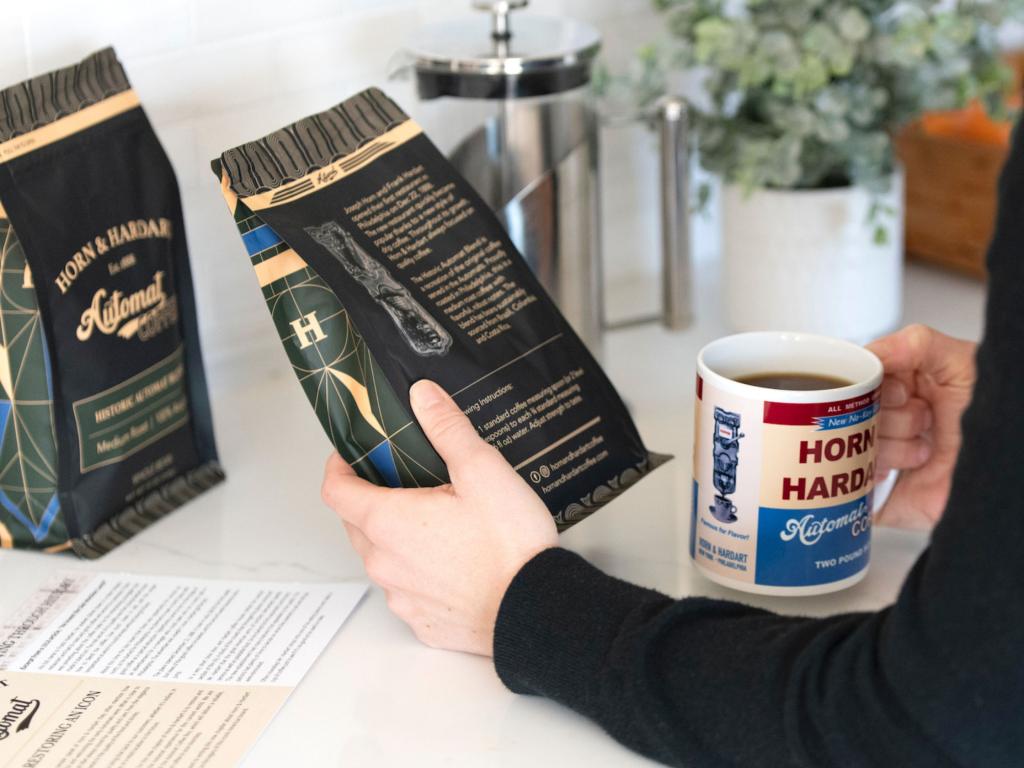Walk along West 38th Street in the Garment District and you’ll catch a glimpse of one of the last remaining Horn & Hardart signs in the city, painted a lifetime ago on the brick back of 1385 Broadway.
The Automat has been gone so long that many New Yorkers wouldn’t recognize it. The rest may feel a pang of nostalgia for the long-lost self-service restaurant chain that fed generations of working stiffs weekday lunches of pot pie and baked beans at affordable prices.
David Arena is only 35, but to the entrepreneur and serial startup guy from Philadelphia, that faded “ghost sign” looks like the future. He’s confident he will bring the Automat back from the dead.
And he thinks he can get the first location open within the year.
Call that blind optimism, maybe, the millennial admits cheerfully. But then again, to wake up every day believing that you’re the guy who’s going to bring H&H’s homespun mac-‘n’-cheese charm to the cynical, $17 salad-choked streets of post-pandemic Midtown, you’ve got to be some kind of dreamer.
And this dreamer calls the project “his life’s calling.”
“We’re going back to the nostalgic 1920s, 1930s charm, to beaux arts, art deco, to the machines themselves — and we’re not going to modernize the recipes,” Arena told The Post, describing what customers will find when they step into his 21st-century reinterpretation, filled with comfortable seating and people tucking into pie and cups of hot coffee at all hours — just like old times.
The first location will likely open in Philadelphia, he said, with New York to follow.
Rise and fall
Horn & Hardart’s journey to becoming one of the things New York seems to be most sad about losing was founded in Philly in 1888 as a luncheonette, by Joseph Horn and Frank Hardart.
In 1902, the pair opened their first Automat, where customers served themselves by accessing prepared dishes in windowed lockers — like classy vending machines meant to show off the food.
The concept was a hit. Ten years later, they were in New York, where the chain became a staple, serving stews, baked beans, and beef and noodles with Burgundy sauce.
The last Horn & Hardart — at 42nd and Third — shut down in 1991, well before Arena’s time. But that detachment makes him the man for the job, he said.
The self-confessed nonrestaurant guy, who sold a media company to take on his dream project full time, said it’s not about nostalgia. Or the food, for that matter — he’s really not even that much of a food guy.
He simply sees the Automat as a great business idea, one of those that’s been out for so long, it’s back in.
“This company was synonymous with innovation in its category for 100 years,” Arena said. “The original ideas of quality, innovation, convenience, caring about your customers, caring about the details — that’s lost in a lot of today’s businesses.”
He believes Horn & Hardart “transcended what most businesses can do.”
“The things the Automat did well were not any particular food item or machine. This is very emotional for people. This reaches well beyond the average business transaction — that’s what I’m focused on,” he explained. “I’m passionate about doing it the right way and preserving the heritage. I feel a sense of moral obligation to the founders.”
Machines, but not robots
And while he is certainly curious about the trend toward automation in the restaurant industry, that’s the exact opposite of what he’s after.
“This isn’t about robots making food — when you look at self-service, what we’re doing is removing lines and waiting,” Arena emphasized.
Yes, you’ll tap your credit card to open the cubbyhole, he said, and modern technology will allow the restaurant to collect data about which products are selling best. But Arena insists there be no touch-screen ordering — and no machines taking jobs from cooks.
“My main mission is to bring Horn & Hardart and the brand back into the modern age and create the world’s best self-service restaurant experience,” he declared.
Arena has spent a significant amount of time trying to build buzz, launching a line of Horn & Hardart coffees, including the historic blend served in the Automats, and declaring June 9 Automat Day, an homage to the first opened on that date in 1902.
“Seeing it go over the last six months from crazy idea to a real concept that people are interested in and investors are interested in — we’re actively looking for spaces and fund-raising,” Arena said.
‘That warm feeling’
Beyond banging down doors as a businessman, he has also been building relationships with the community of people who have carried the torch for the brand since it slipped from view in the ’90s — like Lisa Hurwitz, who directed “The Automat,” a 2021 documentary featuring Carl Reiner and Mel Brooks that brings the history of Horn & Hardart wonderfully alive.
“You have to be crazy to do what David is doing,” Hurwitz told The Post. But she’s quick to admit that her own project, now available on Max after achieving widespread critical success, seemed crazy at the outset, too.
“The Automat is this magical, door-opening phrase,” she explained. “So many favors were done for me not because of me but because of the subject. If what happened to me happened to him, a lot of people should be extra nice and helpful.”
Hurwitz feels like Arena — with whom she has partnered on occasion to promote the resurfacing brand — really understands and appreciates what the Automat was about.
And that’s something, both Hurwitz and Arena agree, that continues to elude the tech-obsessed people who keep trying to create the restaurant of the future.
“The Automat was so much more than the machines themselves; it was what they represented and the set of values that they have — it was kind of a wholesome entrepreneurship,” Hurwitz explained.
Along with being “incredibly affordable,” the filmmaker said Automats were this “strangely safe space, where people felt really welcome and taken care of.”
“The way it lingered in the memories of New Yorkers is a testament to the special place that it was,” she said.
Hurwitz believes Arena’s plan to revive the Automat would “bring back that warm feeling.”
“I can’t tell you how many times people told me they didn’t appreciate the Automat while they had it,” she said. “Maybe, given a second chance, they’ll show up this time.”








